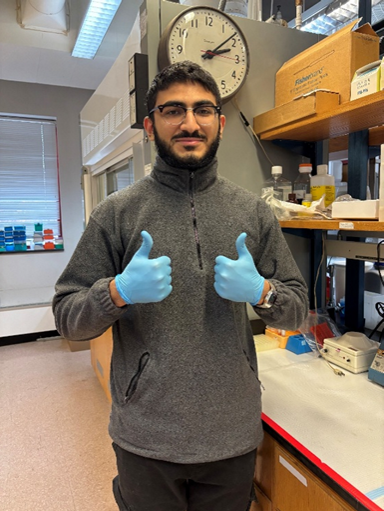Shaan Shirazi, Verrazzano Class of 2025, completed major in Biology

But from the
very beginning, I was fascinated by the work being done on proteins and how the
experiments conducted could help further our knowledge on the intricate systems
that help our bodies function. This was a big motivating factor that kept me
coming back and working in the lab. I loved how the work I did would actually
help us to work towards a goal of publishing our findings on different proteins
and receptors in our bodies, furthering society’s knowledge on this topic.
My capstone
covers how my research aims to understand how a protein in our body named
S100A12 interacts with its respective receptor called RAGE. Using a technique
called fluorescent energy transfer microscopy, it uses a fluorescent protein
that we attached to the receptors to visually observe and detect the
interactions between S100A12 and RAGE. S100A12 is normally produced by our
immune system, and is known to signal immune responses via RAGE, such as
inflammation. S100A12 is observed in patients suffering inflammation from
diseases such as chronic kidney disease and rheumatoid arthritis.
I found it
challenging yet fun learning how to operate different machinery such as the
thermocycler to replicate DNA via polymerase chain reaction (PCR) or the gel
electrophoresis system to confirm the presence of DNA. I began my research with
a basic knowledge on their function and purpose and came out far more experienced
and learned. Experiences like that actually benefited me in my biology classes,
when these techniques were discussed and tested on.
Working on this
project I was very surprised at the time many procedures took, as I quickly
learned that science requires a lot of time and patience to get results, and
that I always have to brace myself for failure as that is much more common than
success. In my capstone paper I detail in my results section the many hiccups I
encountered when working towards my goal, and every time I learned to stand
back and assess what went wrong and adjust my methods accordingly.
I began this
project in my sophomore year, and I have since heavily expanded upon my
research on this specific topic involving the S100A12 protein, testing
different mutants such as S100A12E31A and S100A12E31AI47A’s ability to bind
metal under different conditions. Overall in addition to the scientific
knowledge I have gained working on this project, more importantly, I also learned
a lot of good skills and habits such as patience, work ethic, and critical
thinking.
No comments:
Post a Comment